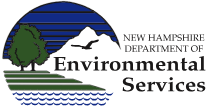Industrial Sources
Regulating and limiting air emissions from a variety of industrial sources through a statewide permitting and compliance program.
NHDES regulates and limits air emissions from a variety of industrial sources within New Hampshire through a statewide permitting program. New Hampshire state statute RSA 125-C enables the department to establish a statewide permitting program which is codified in Env-A 600, Statewide Permit System. Env-A 600 outlines the permitting process and lists sources that require permits for air emissions, either by overall source, specific device, or by pollutant. In addition, NHDES is responsible for implementing most federal air pollution control regulations.
The permitting program is part of New Hampshire's plan to achieve and maintain air quality standards throughout the state. The rules also include National Ambient Air Quality Standards (NAAQS) for six criteria pollutants as well as the basis for establishing ambient air limits for air toxic pollutants.
There are typically four phases in the permitting process. They are as follows:
- First, an applicant files an application to obtain a permit. Once the application is received by NHDES, it undergoes an initial review to ensure that the information submitted is complete and includes all applicable regulatory requirements.
- After the application has been deemed administratively complete, NHDES undertakes an extensive technical review. This may include, but is not limited to, facility site visits, an analysis of historical information, and a review of all applicable rules and regulations. Once NHDES has completed this technical review and is confident that the application accurately reflects the facility’s operations, NHDES develops a draft permit. The draft permit identifies the permitted devices and contains terms and conditions under which the facility is required to operate in order to ensure compliance with all the applicable requirements specified in the permit. In some cases, the permit may also contain certain testing requirements to verify compliance with permit terms and conditions.
- Once the draft permit is prepared, a notice is published. The public, EPA and any other interested parties are invited to submit comments on the draft permit and an opportunity for a public hearing is also provided. If you would like to be included in the interested parties list for a specific source, please fill out the Interested Parties Form.
- After all public comments have been received and evaluated by NHDES, a final determination regarding the permit is made by the director of the Air Resources Division. If the determination is favorable, the draft permit is finalized and issued. A draft permit may be modified as a result of comments received during the public comment period. All pertinent comments received during the public comment period are addressed in a formal document. This document is called the “Findings of Fact and Director’s Decision.”
Any person aggrieved by the director’s decision can file an appeal with the Air Resources Council in accordance with the provisions of Env-A 621.10, Appeals.
New Hampshire state statute RSA 125-C outlines many powers and duties as well as rulemaking authority of the Commissioner of NHDES. In addition to the statewide permitting program, RSA 125-C enables the department to establish rules for air testing, monitoring and recordkeeping, as well as granting the power to conduct inspections, receive complaints and enforce rules.
Once a permit is issued by the department, there are many ways in which NHDES ensures compliance with the conditions contained in the permit. Those include review of records through the submission of required compliance reports, stack testing and monitoring, inspection of the source, and enforcement when compliance issues are identified.
Sources are also required to maintain records of their air toxics compliance demonstration if that regulation applies to the facility.




